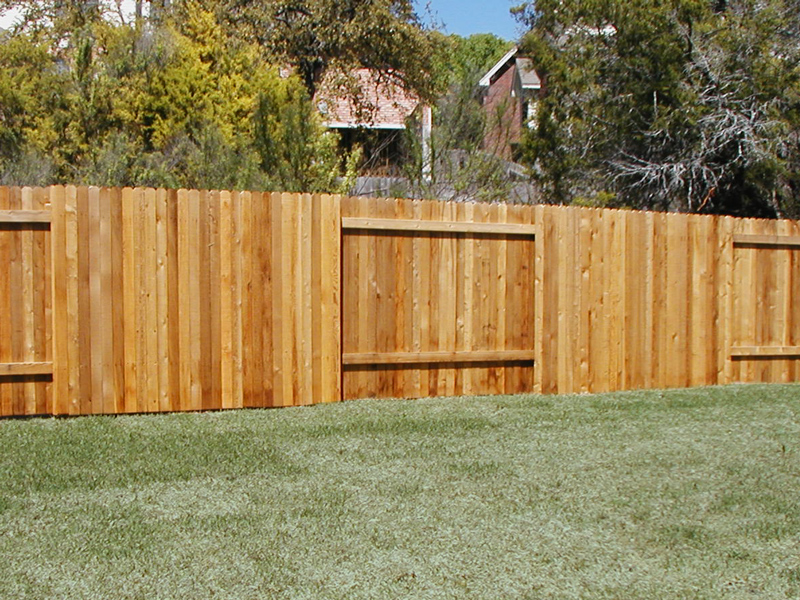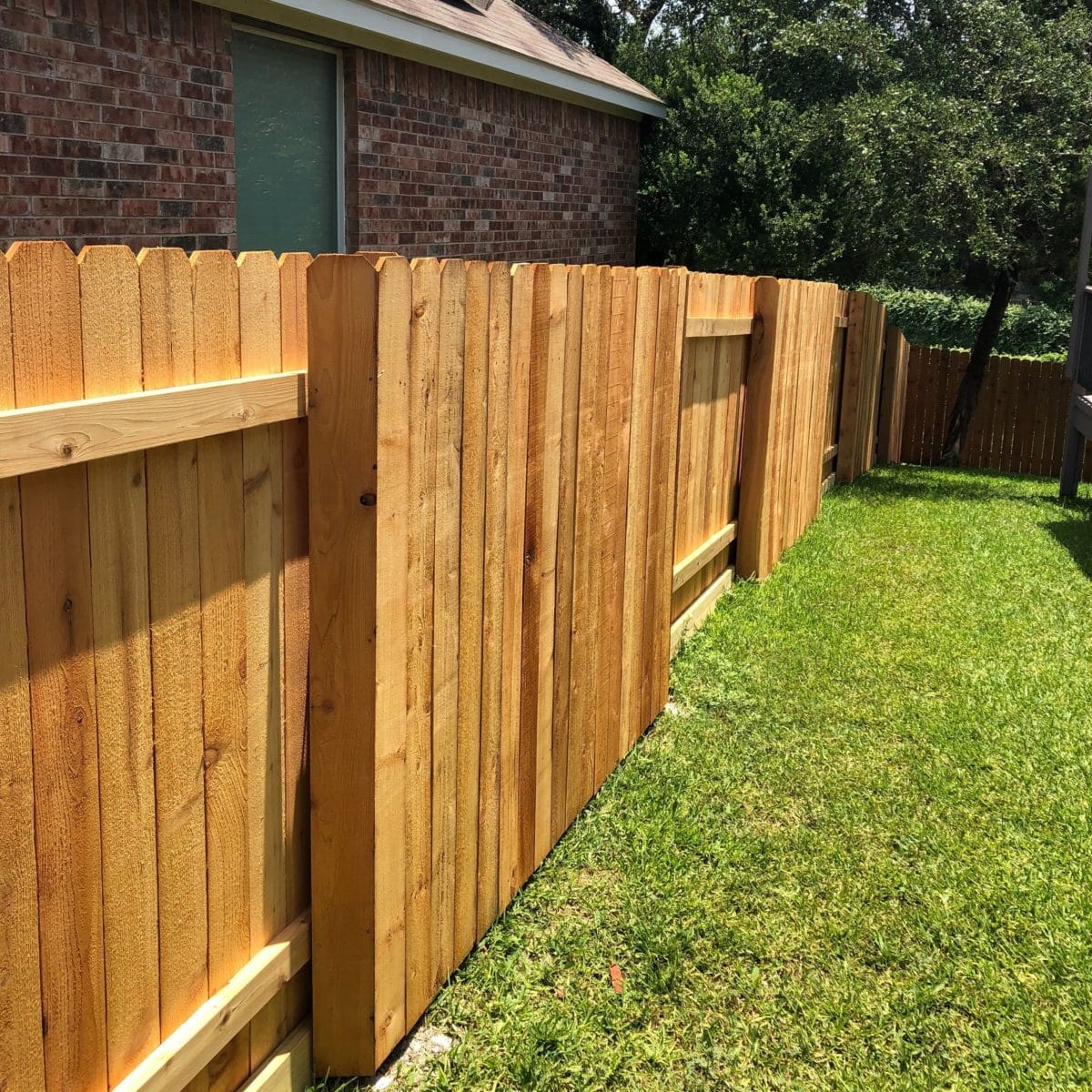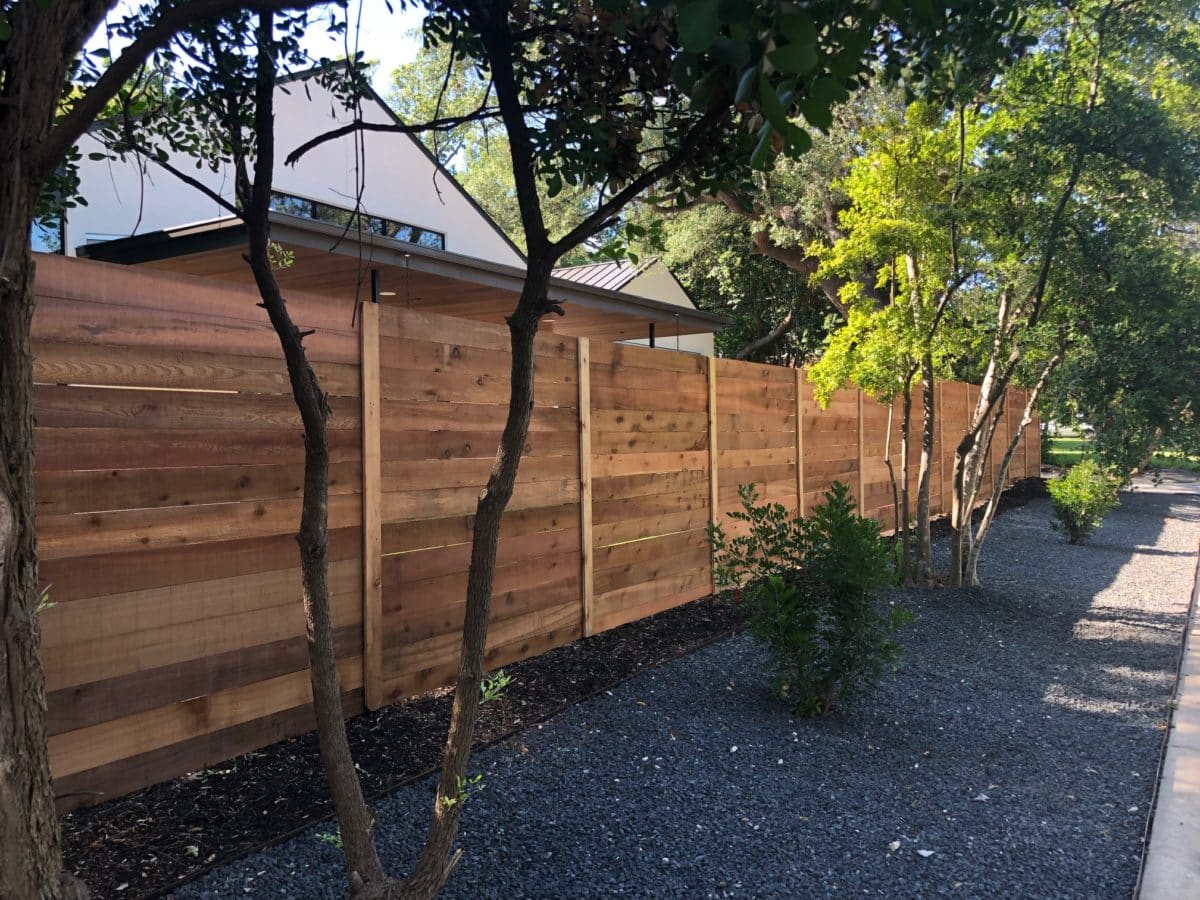Choosing the Best Wood for Your Central Texas Deck
When it comes to building a wood deck in Central Texas, specifically in the…

It’s standard practice in many Texas neighborhoods for neighbors to share fences. In almost every situation, you will share your fence with at least one neighbor, but often you share a fence on both sides of your yard, and sometimes you’re even sharing your back fence.
No matter how many fence sides you’re sharing with your neighbors, you’ll want to be respectful and make your fence installation experience positive for all parties involved.
Below we will go over some standard fence etiquette tips regarding shared fences and why they’re important—let’s dive in!
Whether you’re looking to repair or maintain a fence, if there’s already one between your home and a neighbor’s home, you’ll first want to find out who owns it before beginning a project.
In the best-case scenario, if you own the fence, feel free to proceed immediately with how you see fit. If the fence belongs to your neighbor, you’ll need to open a dialogue with them to continue with the project.
When approaching them, have a prepared list of specific reasons you think your neighbor’s fence requires updating. Stating your rationale will do more to convince them than if the reason is that you simply want a change.
It’s also possible that both property owners are responsible for the fence if they both use it and own the land touching it on either side. In this case, you’ll want to give them an idea of your expectations early and get an idea of what they would and would not be willing to do with the fence.
Although this might seem obvious, taking a moment to double-check your property lines could save you a lot of headaches down the road!
Legally, you can only install a fence (or anything else) on your property, not your neighbor’s. If you accidentally install your fence on your neighbor’s property, they could legally take it down, negating all the time and money you spent installing it.
It’s best to take a few minutes before your project to confirm where your property ends and to communicate your project plans to your neighbors.
To determine where your property lines are, you will need to look at your home’s survey report. The property lines will be clearly defined in this survey, but if you don’t have yours on hand, you will need to contact your county’s record office.
Occasionally the record office won’t have your survey recorded, meaning you’ll have to hire a land surveyor. A survey is not required if there is already an existing fence. The new fence will be installed in the current place.
Though not required, having an open dialogue with your neighbors is always the best place to start!
When developing a plan, talk about the design with your neighbor. Discuss what you’re trying to accomplish—are you focusing on aesthetics or need security for a pet? Also, consider what the rest of the neighborhood looks like and what is required by the Homeowners Association (HOA), if applicable.
If your neighbors agree about installing a new fence, they will often share the cost with you. Because the fence will benefit both parties, your neighbors might be interested in sharing costs, and the conversation about property lines and fence maintenance will also become much easier.
Not all neighbors will be amiable and in agreement with your plan. Try to make all attempts to collaborate, but if the fence is on your property, you may do as you please (again, abiding by HOA if applicable).
If you already have a fence or recently had one installed, you will want to keep up with its maintenance. Not only will this help your curb appeal and home value, but it will also benefit your neighbor’s home. To ensure that you keep up with your fence maintenance, make sure you install a fence you feel comfortable maintaining.
Vinyl and aluminum fences are incredibly low-maintenance and only require a quick wash-down every once and a while. Whereas if you’re up for a little more maintenance, a wood privacy fence or horizontal fence can be a beautiful addition to your home.
Examples of fence maintenance include cleaning, staining, sealing (if it’s wood), and fixing loose and damaged pickets.
Also, be aware of a sprinkler head hitting the same spot on a wood fence, as this can quickly damage and leave a weathered mark. Keeping your lawn watered and moist will also keep your posts firm in the ground and prevent the cement from cracking.
When putting in a new fence, it’s polite to give your neighbors the good side of a wood fence and have the “back side” of it face you. Giving your neighbors the good side became a common courtesy because your neighbors will be happier with the fence if they can admire its full charm.
The overall appearance of your property will also benefit from the better-looking side of the fence facing outward, making your new fence the talk of the town.

If you cannot determine which side of the fence looks best, you may be lucky enough to have a “good neighbor” fence on your hands. Neighbor-friendly fences have two good sides, making them a win-win option for you and your neighbor. Some examples of this fencing style include:



Any of these fences makes an excellent choice because they provide you and your neighbor privacy while being equally attractive on both sides.
Generally, the neighbor pursuing the fence construction or repair takes on any associated costs. Sometimes, other neighbors will be willing to pitch in, but it’s courteous not to assume.
It’s also worth checking to see if your HOA has any additional guidance set in place. Referencing existing protocols can help you avoid any potentially uncomfortable conversations between neighbors.
Your neighbors will still be there regardless of who pays for the fence, so it’s best to keep all interactions pleasant. Wherever possible, try to compromise or reach an agreement that suits both parties. Look for common ground both you and your neighbor can agree on for repairing, replacing, or maintaining a fence.
As a rule, if a fence is not a boundary fence, it must be built at least two feet inside your property line.
The best options for building near a neighbor’s existing fence are placing the new one right up against the current one or leaving enough space between the fences for someone to mow.
A smaller space than that makes it challenging to keep up with the grass between fences. Leaving only 1–2 feet between a new and existing fence can allow weeds to grow unchecked without enough space to treat them. You can avoid this unnecessary problem by leaving a little extra room next to your neighbor’s fence.
Communicate with your neighbors when you’ll have work done in case they’d be bothered by the noise or in case they’d like to share the costs. They’ll appreciate being kept in the know and be able to make any changes to their plans accordingly. It’s nice to give your neighbors notice when construction occurs so it doesn’t take them by surprise.
For replacing a fence, make sure any neighbors with pets know there will be no fence for 24 hours once the posts have been set because they need to sit in concrete before the pickets can be added.
If there is no HOA recommendation for your house’s fencing, you might want to choose fence materials that will go well with the rest of the neighborhood’s design. If you live in an area with classically designed, old-fashioned houses, you wouldn’t want to put up an abstract, modern fence. For example, if every house on your street has iron fences, you would also consider choosing an iron fence around your home. Making design choices that create a cohesive neighborhood will benefit everyone who lives there.
Communication with your neighbors is key with any backyard project, and with fence installation, even more so. By following our shared fence etiquette tips above, you can take the stress out of fence building and enjoy the privacy and security a new fence will bring to your home.
If you and your neighbors are ready for a new fence, contact our Austex Fence and Deck experts for a free consultation!
Contact us today for expert advice and get a free quote for your fencing needs!